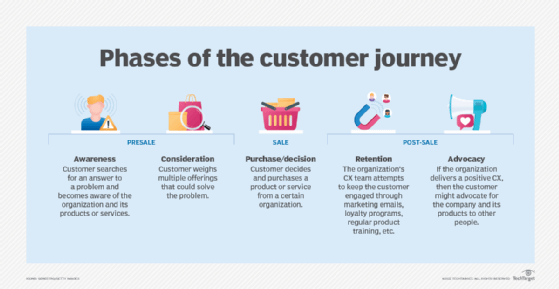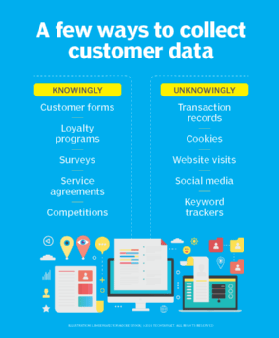6 ways customer experience can increase sales
Organizations that offer a positive CX can boost customer loyalty, reduce churn and increase word-of-mouth advertising. Explore six important ways CX increases sales.
A customer's overall experience with a brand -- positive or negative -- is a major contributor to long-term loyalty and sales.
In many ways, the experience a customer has with an organization outweighs the perceived value of the product or service they purchase. Customer experience is technically separate from the investment of the product or service, but customers often consider both as they form an opinion of their purchase. An effective CX strategy can help organizations understand their customers' needs, which in turn increases customer retention and improves the bottom line.
Explore six ways that CX can increase sales.
1. Customer retention costs less than acquisition
Most businesses understand that customer retention costs less than acquiring new customers, because loyal customers tend to spend considerably more than the average customer.
Organizations may need to wait months or years before new customers develop loyalty to their brands. Many CX management technologies -- including CRM systems, productivity and omnichannel tools -- focus on customer retention and offer a quick route to increased profits.
2. Customer feedback lets organizations make necessary changes
CX platforms gather information about a customer's experience along every step of the customer journey. Organizations can gather that data into a digital CX platform from several sources, including customer satisfaction surveys, website and app feedback, phone and chat conversations, social media, and API hooks that connect to other customer-facing technologies.
After organizations collect this data, they must analyze it to gain accurate and actionable CX insights. This process lets organizations identify and rectify problems to increase customer retention.

3. Happy and empowered employees make happy customers
Customer interactions with employees contribute to the overall customer experience and sales. Organizations should retain well-trained and satisfied employees, because these employees know how to best help customers.
Organizations can give frontline employees recommended action items from CX management platforms to help them create a positive CX. Happy customers can then create a positive experience for the employees in return, which can help retain employees that go above and beyond.
4. Free word-of-mouth advertising
While many websites offer customers ways to provide feedback on a product or service, people have grown wary of online reviews. Bad actors can easily write fake reviews and manipulate these sites.

However, if a positive or negative review comes from a friend or family member, people will be more inclined to believe it. Therefore, a positive CX can result in free advertising, as happy customers tell their friends and family about their experience. Also, customers may share positive reviews on their social media accounts, which can reach a wide audience.
5. Quickly rectify mistakes
Even the most CX-conscious organizations make mistakes and encounter unsatisfied customers. However, CX technology can help identify and rectify mistakes throughout the CX lifecycle.
Long-standing and loyal customers often forgive occasional mistakes if organizations quickly resolve their issues. CX management platforms collect customer feedback through various channels, such as surveys and social media posts, which helps organizations immediately address customers' concerns.
6. Understand the competition's strengths and weaknesses
Much of the customer data a CX platform collects contains information about how customers compare one product or service to a competitor's. Collection and analysis of this data can help organizations understand what people like and dislike about their competitors.
In turn, CX leaders can quickly make business changes to either mimic positive competitor attributes or avoid negative ones. These small yet critical details can influence where customers spend their money.








